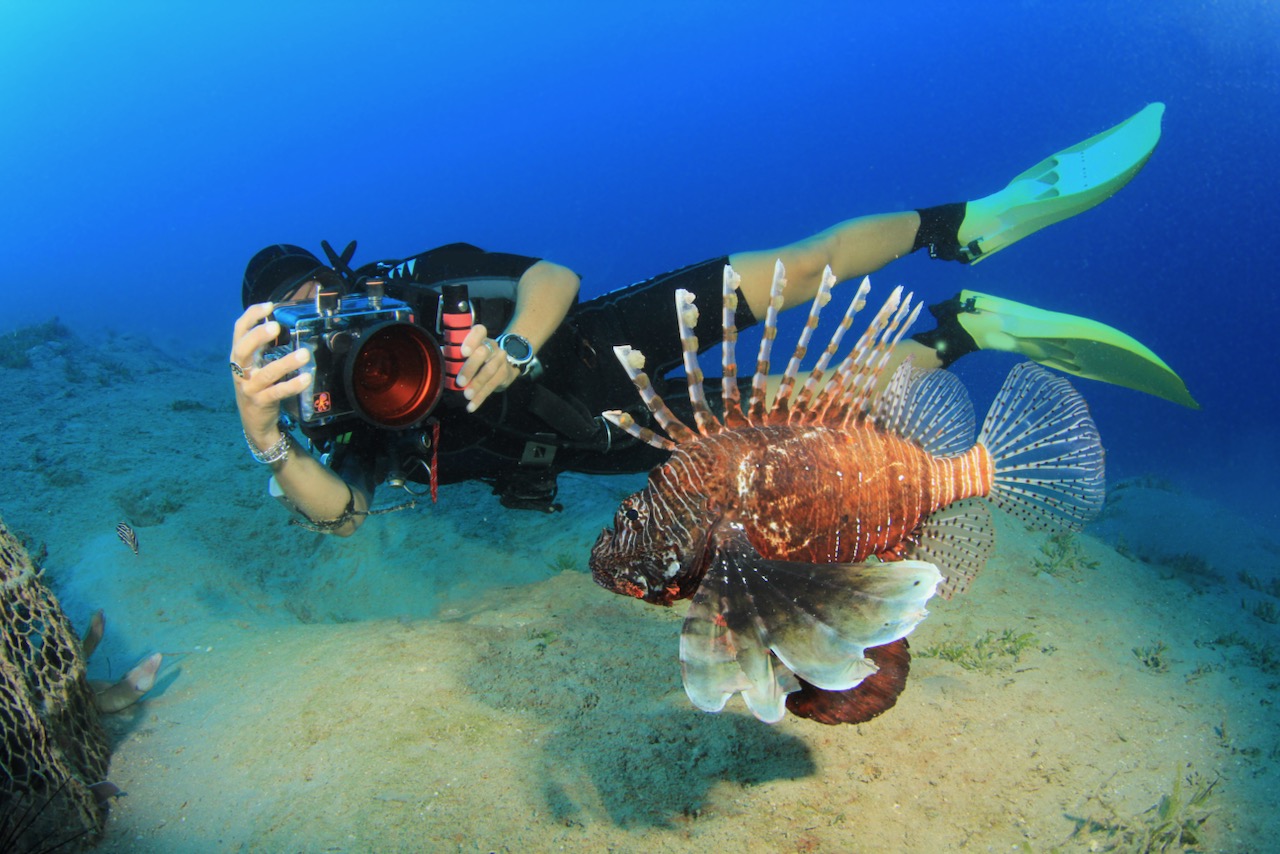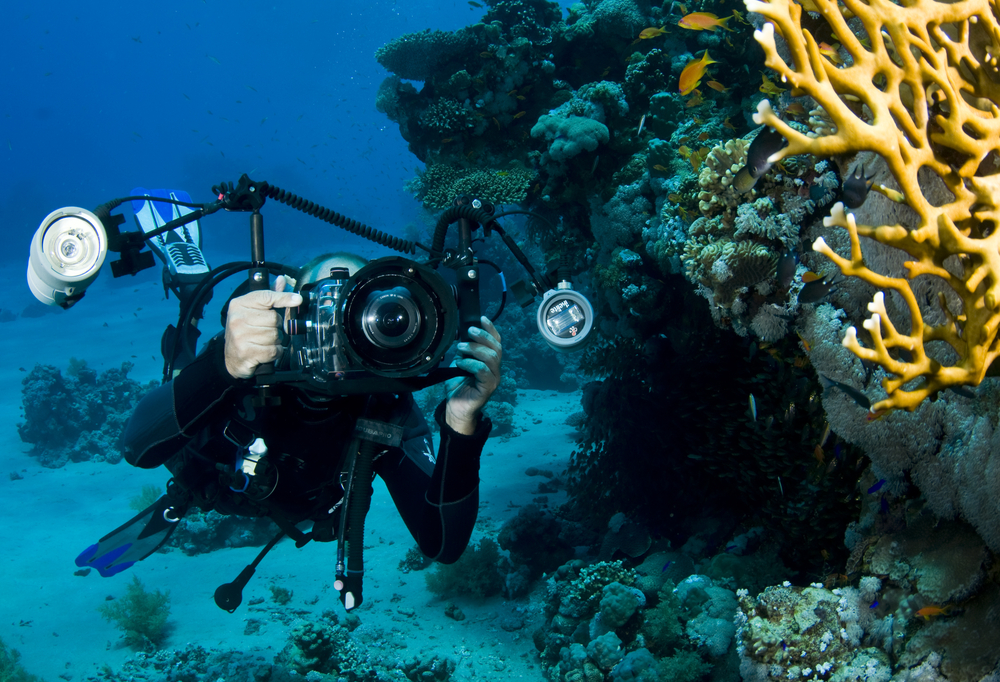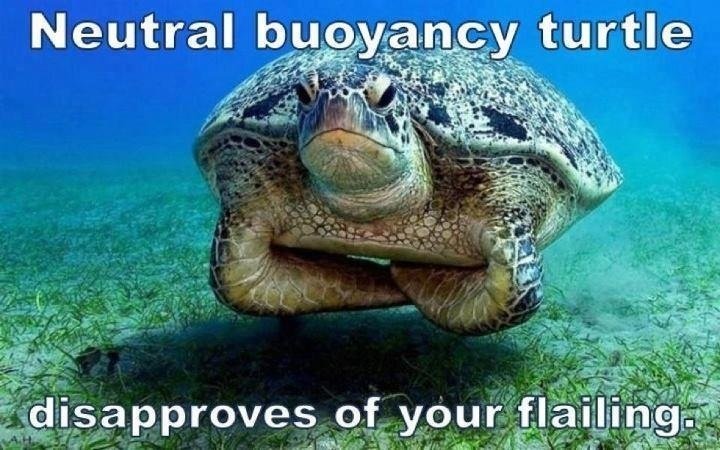The word “etiquette” can bring to mind a fussy person who cares more about appearances than enjoying the moment. But for the love of fan coral can we please set aside whatever feelings we have about the word etiquette and agree that being a safe, responsible diver is more important than getting the perfect shot.
Underwater photographers (and videographers) can be the best divers in the group or the absolute worst.
The best:
Have impeccable buoyancy Respect marine life Are mindful of other diversThe worst:
Ruin marine life encounters for others Kick coral and scare critters Put themselves in dangerHere are our top underwater photography etiquette tips for helping you get the best shot possible without angering your dive buddies.

Professional underwater photographer and PADI AmbassaDiver™ Pier Nirandara advises divers to, “get close, but not too close” and “let the animal come to you.”
Keep an eye on your dive guide. If the guide doesn’t approach the creature, you shouldn’t either. Large animals, such as manta rays, can be skittish. Don’t ruin the encounter for everyone by rushing towards a creature and scaring it away.
If the creature is somewhat stationary, such as a blenny in its burrow, it’s important to go slow. Approach from the side or below, never head-on.
Be patient. Let the animal get comfortable having you around before you put a lens in its face or start firing the flash.
Read more underwater photography techniques and tips for photographing marine life.
How to ruin a photo opportunity:
Swim directly at a creature Put your lens right in its face Use your flash multiple times in a rowSeriously though, don’t be that guy. People save up for years to afford a very special trip to see a bucket list animal. When a diver rushes toward the animal and scares it away — never to be seen again — it’s heartbreaking.
World-renowned photographer Stephen Frink recommends predictive previsualization.
According to Frink, “See in your mind’s eye how the shot should look, set all your camera and strobe controls for when the creature gets close enough…and trip the shutter once you cohabitate the shot zone.”
Even if you use a GoPro or other point-and-shoot camera, you can still:
Get your buoyancy dialed in Decide how close you want to get Choose the angle you’d like to shoot from
Professional photographers and videographers don’t crowd one another. They wait patiently and give the other shooter and their subject plenty of space. Once you get your settings dialed in (see above), don’t forget to look around. There may be a great shot right in front of you. Including a diver in your shot can help the viewer understand how big, small or how hidden the creature was.
IMPORTANT: Don’t let your photo interfere with someone else’s. Avoid using your strobes or angle them away from the other diver’s shooting angle.
If you’re swimming along and find an interesting critter, the unwritten rule is: you get to spend as much time as you want with it. But if the dive guide finds something photo-worthy, limit your time to about one minute or three shots. It doesn’t have to be exactly one minute or three shots, no one will be timing you or counting strobe flashes. The point is to be courteous to other divers and not be a “critter hog.”
If you want more time, just wait until everyone else takes a turn and go back. While you wait, you might see another photographer/videographer shoot from a different angle and learn something.
Prefer to take your time? Dive guides are expert critter finders and most offer private tours.
You’ve probably heard about the rule of thirds, but you might not know the rule of three. Each time you finish filming, do these three things:
Check Your Position – Before you float away, check your body position. Make sure you’re not about to kick a beautiful, 100-year-old fan coral. Check Your Air – It may be tempting to start reviewing your footage, but it’s more important to ensure you have enough breathing gas. Check For Your Dive Buddy – Don’t take a “same ocean same day” approach to being dive buddies. In an emergency, you are each other’s lifeline. If you are a forgotten and neglected dive buddy reading this article (I see you, friend), consider taking the PADI Self-Reliant Diver Specialty.By doing the three things above every time you finish shooting a new subject, you can protect yourself, your buddy and the fragile underwater environment.
The best underwater photographers are also the best divers. They don’t kick the reef, scare away animals or monopolize a subject. They also pay attention to their air, depth and dive buddy.
If you can’t hold your position in the water, you’re going to be plagued by fish butts and backscatter. If you want to take photos and videos you’ll be proud to share, you need strong diving skills, especially buoyancy.
Becoming a skilled underwater photographer or videographer takes time and lots of practice. But there are two ways to shorten the learning curve:
Share This
